Simone Schaub-Meyer
Efficient Masked Attention Transformer for Few-Shot Classification and Segmentation
Jul 31, 2025Abstract:Few-shot classification and segmentation (FS-CS) focuses on jointly performing multi-label classification and multi-class segmentation using few annotated examples. Although the current state of the art (SOTA) achieves high accuracy in both tasks, it struggles with small objects. To overcome this, we propose the Efficient Masked Attention Transformer (EMAT), which improves classification and segmentation accuracy, especially for small objects. EMAT introduces three modifications: a novel memory-efficient masked attention mechanism, a learnable downscaling strategy, and parameter-efficiency enhancements. EMAT outperforms all FS-CS methods on the PASCAL-5$^i$ and COCO-20$^i$ datasets, using at least four times fewer trainable parameters. Moreover, as the current FS-CS evaluation setting discards available annotations, despite their costly collection, we introduce two novel evaluation settings that consider these annotations to better reflect practical scenarios.
Disentangling Polysemantic Channels in Convolutional Neural Networks
Apr 17, 2025Abstract:Mechanistic interpretability is concerned with analyzing individual components in a (convolutional) neural network (CNN) and how they form larger circuits representing decision mechanisms. These investigations are challenging since CNNs frequently learn polysemantic channels that encode distinct concepts, making them hard to interpret. To address this, we propose an algorithm to disentangle a specific kind of polysemantic channel into multiple channels, each responding to a single concept. Our approach restructures weights in a CNN, utilizing that different concepts within the same channel exhibit distinct activation patterns in the previous layer. By disentangling these polysemantic features, we enhance the interpretability of CNNs, ultimately improving explanatory techniques such as feature visualizations.
Knowledge Distillation for Multimodal Egocentric Action Recognition Robust to Missing Modalities
Apr 11, 2025Abstract:Action recognition is an essential task in egocentric vision due to its wide range of applications across many fields. While deep learning methods have been proposed to address this task, most rely on a single modality, typically video. However, including additional modalities may improve the robustness of the approaches to common issues in egocentric videos, such as blurriness and occlusions. Recent efforts in multimodal egocentric action recognition often assume the availability of all modalities, leading to failures or performance drops when any modality is missing. To address this, we introduce an efficient multimodal knowledge distillation approach for egocentric action recognition that is robust to missing modalities (KARMMA) while still benefiting when multiple modalities are available. Our method focuses on resource-efficient development by leveraging pre-trained models as unimodal feature extractors in our teacher model, which distills knowledge into a much smaller and faster student model. Experiments on the Epic-Kitchens and Something-Something datasets demonstrate that our student model effectively handles missing modalities while reducing its accuracy drop in this scenario.
Boosting Omnidirectional Stereo Matching with a Pre-trained Depth Foundation Model
Mar 30, 2025Abstract:Omnidirectional depth perception is essential for mobile robotics applications that require scene understanding across a full 360{\deg} field of view. Camera-based setups offer a cost-effective option by using stereo depth estimation to generate dense, high-resolution depth maps without relying on expensive active sensing. However, existing omnidirectional stereo matching approaches achieve only limited depth accuracy across diverse environments, depth ranges, and lighting conditions, due to the scarcity of real-world data. We present DFI-OmniStereo, a novel omnidirectional stereo matching method that leverages a large-scale pre-trained foundation model for relative monocular depth estimation within an iterative optimization-based stereo matching architecture. We introduce a dedicated two-stage training strategy to utilize the relative monocular depth features for our omnidirectional stereo matching before scale-invariant fine-tuning. DFI-OmniStereo achieves state-of-the-art results on the real-world Helvipad dataset, reducing disparity MAE by approximately 16% compared to the previous best omnidirectional stereo method.
Beyond Accuracy: What Matters in Designing Well-Behaved Models?
Mar 21, 2025Abstract:Deep learning has become an essential part of computer vision, with deep neural networks (DNNs) excelling in predictive performance. However, they often fall short in other critical quality dimensions, such as robustness, calibration, or fairness. While existing studies have focused on a subset of these quality dimensions, none have explored a more general form of "well-behavedness" of DNNs. With this work, we address this gap by simultaneously studying nine different quality dimensions for image classification. Through a large-scale study, we provide a bird's-eye view by analyzing 326 backbone models and how different training paradigms and model architectures affect the quality dimensions. We reveal various new insights such that (i) vision-language models exhibit high fairness on ImageNet-1k classification and strong robustness against domain changes; (ii) self-supervised learning is an effective training paradigm to improve almost all considered quality dimensions; and (iii) the training dataset size is a major driver for most of the quality dimensions. We conclude our study by introducing the QUBA score (Quality Understanding Beyond Accuracy), a novel metric that ranks models across multiple dimensions of quality, enabling tailored recommendations based on specific user needs.
Continual Learning Should Move Beyond Incremental Classification
Feb 17, 2025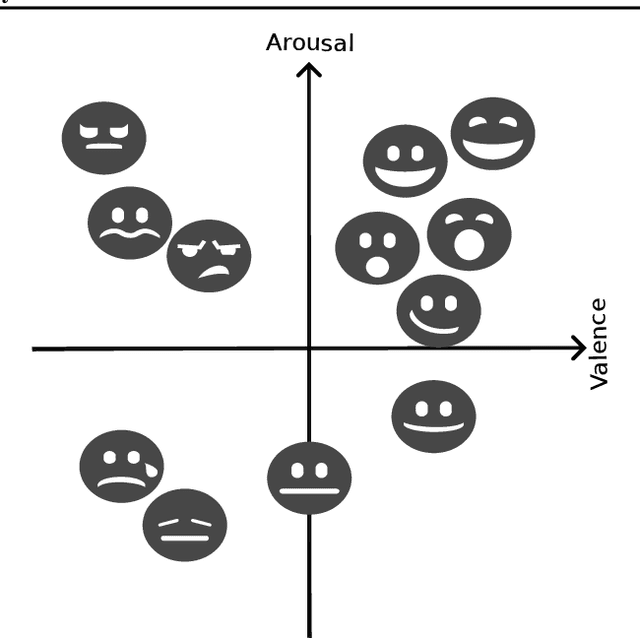
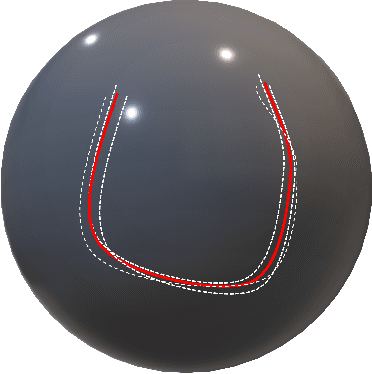
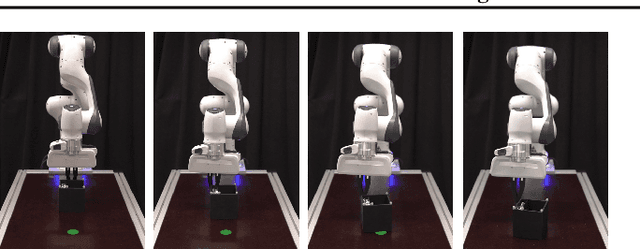
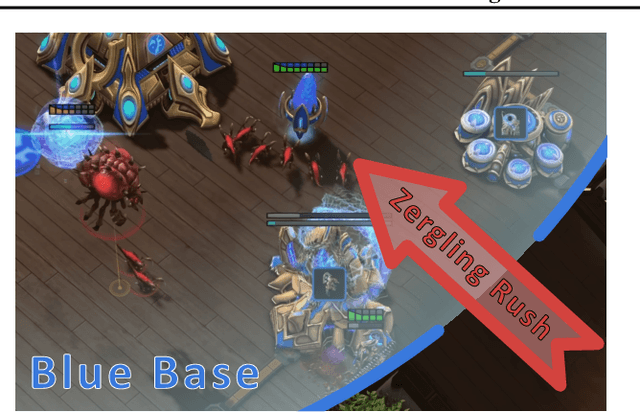
Abstract:Continual learning (CL) is the sub-field of machine learning concerned with accumulating knowledge in dynamic environments. So far, CL research has mainly focused on incremental classification tasks, where models learn to classify new categories while retaining knowledge of previously learned ones. Here, we argue that maintaining such a focus limits both theoretical development and practical applicability of CL methods. Through a detailed analysis of concrete examples - including multi-target classification, robotics with constrained output spaces, learning in continuous task domains, and higher-level concept memorization - we demonstrate how current CL approaches often fail when applied beyond standard classification. We identify three fundamental challenges: (C1) the nature of continuity in learning problems, (C2) the choice of appropriate spaces and metrics for measuring similarity, and (C3) the role of learning objectives beyond classification. For each challenge, we provide specific recommendations to help move the field forward, including formalizing temporal dynamics through distribution processes, developing principled approaches for continuous task spaces, and incorporating density estimation and generative objectives. In so doing, this position paper aims to broaden the scope of CL research while strengthening its theoretical foundations, making it more applicable to real-world problems.
DIAGen: Diverse Image Augmentation with Generative Models
Aug 26, 2024

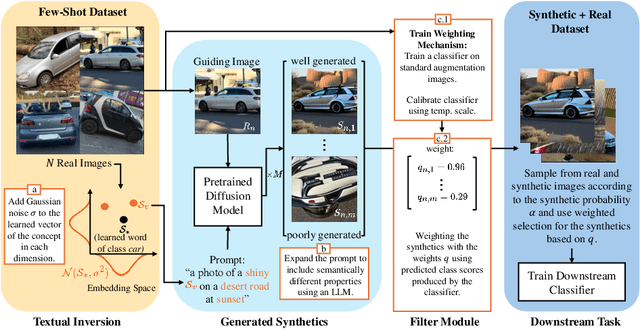
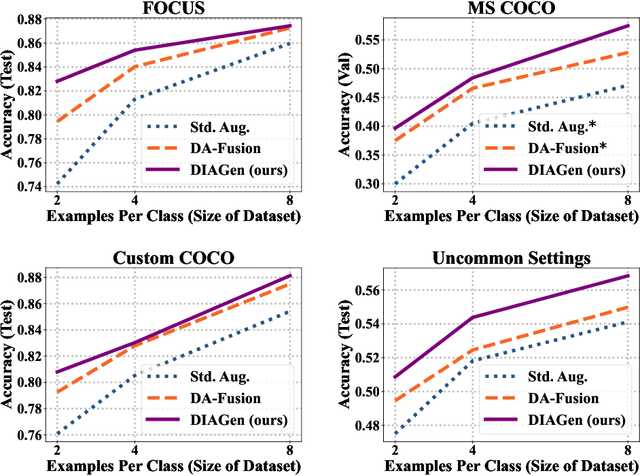
Abstract:Simple data augmentation techniques, such as rotations and flips, are widely used to enhance the generalization power of computer vision models. However, these techniques often fail to modify high-level semantic attributes of a class. To address this limitation, researchers have explored generative augmentation methods like the recently proposed DA-Fusion. Despite some progress, the variations are still largely limited to textural changes, thus falling short on aspects like varied viewpoints, environment, weather conditions, or even class-level semantic attributes (eg, variations in a dog's breed). To overcome this challenge, we propose DIAGen, building upon DA-Fusion. First, we apply Gaussian noise to the embeddings of an object learned with Textual Inversion to diversify generations using a pre-trained diffusion model's knowledge. Second, we exploit the general knowledge of a text-to-text generative model to guide the image generation of the diffusion model with varied class-specific prompts. Finally, we introduce a weighting mechanism to mitigate the impact of poorly generated samples. Experimental results across various datasets show that DIAGen not only enhances semantic diversity but also improves the performance of subsequent classifiers. The advantages of DIAGen over standard augmentations and the DA-Fusion baseline are particularly pronounced with out-of-distribution samples.
Guided Latent Slot Diffusion for Object-Centric Learning
Jul 25, 2024Abstract:Slot attention aims to decompose an input image into a set of meaningful object files (slots). These latent object representations enable various downstream tasks. Yet, these slots often bind to object parts, not objects themselves, especially for real-world datasets. To address this, we introduce Guided Latent Slot Diffusion - GLASS, an object-centric model that uses generated captions as a guiding signal to better align slots with objects. Our key insight is to learn the slot-attention module in the space of generated images. This allows us to repurpose the pre-trained diffusion decoder model, which reconstructs the images from the slots, as a semantic mask generator based on the generated captions. GLASS learns an object-level representation suitable for multiple tasks simultaneously, e.g., segmentation, image generation, and property prediction, outperforming previous methods. For object discovery, GLASS achieves approx. a +35% and +10% relative improvement for mIoU over the previous state-of-the-art (SOTA) method on the VOC and COCO datasets, respectively, and establishes a new SOTA FID score for conditional image generation amongst slot-attention-based methods. For the segmentation task, GLASS surpasses SOTA weakly-supervised and language-based segmentation models, which were specifically designed for the task.
Benchmarking the Attribution Quality of Vision Models
Jul 16, 2024Abstract:Attribution maps are one of the most established tools to explain the functioning of computer vision models. They assign importance scores to input features, indicating how relevant each feature is for the prediction of a deep neural network. While much research has gone into proposing new attribution methods, their proper evaluation remains a difficult challenge. In this work, we propose a novel evaluation protocol that overcomes two fundamental limitations of the widely used incremental-deletion protocol, i.e., the out-of-domain issue and lacking inter-model comparisons. This allows us to evaluate 23 attribution methods and how eight different design choices of popular vision models affect their attribution quality. We find that intrinsically explainable models outperform standard models and that raw attribution values exhibit a higher attribution quality than what is known from previous work. Further, we show consistent changes in the attribution quality when varying the network design, indicating that some standard design choices promote attribution quality.
Is Synthetic Data all We Need? Benchmarking the Robustness of Models Trained with Synthetic Images
May 30, 2024


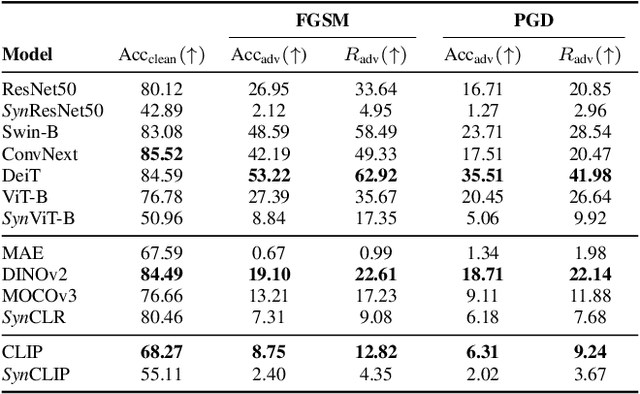
Abstract:A long-standing challenge in developing machine learning approaches has been the lack of high-quality labeled data. Recently, models trained with purely synthetic data, here termed synthetic clones, generated using large-scale pre-trained diffusion models have shown promising results in overcoming this annotation bottleneck. As these synthetic clone models progress, they are likely to be deployed in challenging real-world settings, yet their suitability remains understudied. Our work addresses this gap by providing the first benchmark for three classes of synthetic clone models, namely supervised, self-supervised, and multi-modal ones, across a range of robustness measures. We show that existing synthetic self-supervised and multi-modal clones are comparable to or outperform state-of-the-art real-image baselines for a range of robustness metrics - shape bias, background bias, calibration, etc. However, we also find that synthetic clones are much more susceptible to adversarial and real-world noise than models trained with real data. To address this, we find that combining both real and synthetic data further increases the robustness, and that the choice of prompt used for generating synthetic images plays an important part in the robustness of synthetic clones.
 Add to Chrome
Add to Chrome Add to Firefox
Add to Firefox Add to Edge
Add to Edge